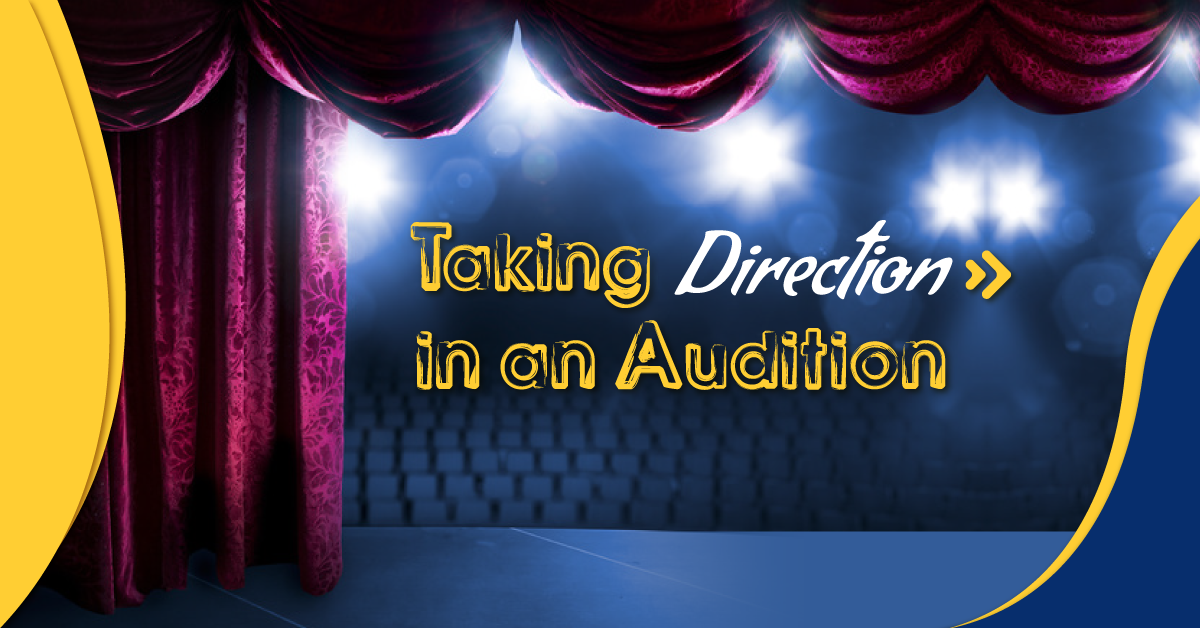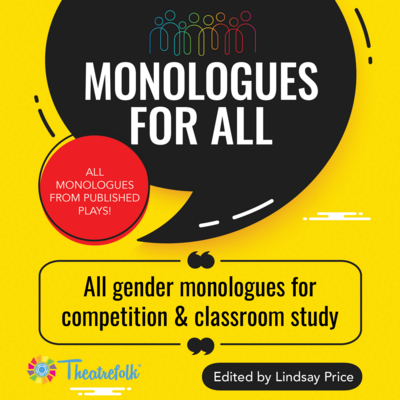A squirt gun would never be mistaken for a real gun, right? Dive into the thought-provoking world of Water. Gun. Argument and challenge what we choose to believe. A thought provoking and powerful piece in a docu-theatre style.

“Let’s Try That Again”: Taking Direction in an Audition
It’s rare that a student will select the absolute perfect monologue to show exactly everything they’re capable of doing onstage. One monologue can only go so far in showing a student’s acting range. Perhaps the student chose a dramatic monologue and you wanted to consider them for a more comedic role. Furthermore, a student might blow you away in that particular moment that they’ve practiced and perfected, but does that mean that they can take direction? Are they open to exploring, playing, and trying a different approach to the character?
Well, there’s a way to find out… Give them some directions!
It’s advantageous to allow time in auditions to have students try their monologues again, with some direction from you. The directions you give can run the gamut from practical feedback – such as slowing down, speaking more loudly, or separating their words – to a slight performance change, such as doing the monologue with or without an accent or standing up rather than sitting – to an entirely different approach to the character. This is most likely the biggest challenge for your students, but the most fun as well.
If a student presents a dramatic, serious monologue, have them try performing the monologue while pretending to hold back hysterical laughter, or as if they have an urgent need to use the restroom. If their monologue includes a lot of yelling or anger, have them perform as if they are trying not to wake a sleeping baby. Try changing up the location of the monologue – have your student perform their monologue while imagining they are in a hot desert, in a sinking rowboat, or on a roller coaster. Or, switch up who the person is that they are speaking to in the monologue. The tone of a monologue tone would be very different if the character is speaking to their crush, their grandmother, a celebrity, or the prime minister.
This technique is a great way to gauge how open the student is to taking direction, how fast they can think on their feet, how attached they are to their initial blocking, and how well they listen. Of course, you cannot expect a polished, perfect performance on the second go, but watch carefully and see what might be glimmering under the surface!
If you plan to use this technique in your next round of auditions, be sure to let your students know this in advance so they aren’t completely thrown off during the actual audition. As I always say, this skill (taking direction in the moment) is definitely something that students can practice and develop in the drama classroom!
The following mini-exercise is a great way to introduce the concept of taking direction on the fly:
1. Have students prepare a brief monologue – only three to five lines. It’s best for students to act as if this was a real audition and memorize their lines, but this exercise also works if the students are still “on book.” Students will perform their brief monologue as if they were doing an audition – focusing on emotions, expression, and gestures – not just saying/reading the lines aloud. (Students should also know what play the monologue is from and what character they are performing.)
2. Take five minutes to brainstorm (as a full class) a list of simple directions that could be used to mix up the monologues. Here are a few to get you started:
- Riding a jet-ski
- Concerned they may have stepped in something smelly
- While chewing gum
- On a rollercoaster
- While knitting a sweater
- Talking to a very small child
- In the middle of the Arctic tundra
- Riding a horse
- After they discover they’ve won the lottery
- Trying to dislodge something stuck in their teeth
3. One at a time, students will present their brief monologue to the class, as they have prepared it.
4. Then, you will select one direction from the brainstormed list for them to use as a prompt, and the student will perform their brief monologue again, using that prompt in their performance.
5. How did the student feel after experiencing the new direction for their performance?
Feel free to repeat this exercise within the classroom, working up to fully memorized pieces and longer monologues.
Distance Learning Adaptation
This exercise can be done as written, using a video conferencing program such as Zoom or Skype. Students will prepare a short monologue, brainstorm a list of directions, present their monologues live on-camera, receive a direction, perform again, and compare how they felt after performing twice. If necessary, have students complete and submit their comparison as a written reflection.
Before presenting their monologues, have students discuss the advantages and disadvantages of auditioning on video versus auditioning in-person. Some things to think about may include video quality issues, how you frame yourself in the camera, and avoiding audio problems such as echoes and lag. As well, compare the differences between presenting their monologues live versus pre-recorded.
Related Articles
Audition Toolkit
by Lindsay Price, Craig Mason, and Kerry Hishon
Teach students to present their best selves in an audition situation with The Audition Toolkit - complete with articles, exercises, tips and more for both teachers and students.
Create Your Own Choice Board: Drama Activities
by Lindsay Price
Choice boards give students the opportunity to choose how they want to learn a particular subject. Create Your Own Choice Boards: Drama Activities can help encourage your students' independence by allowing them to take an active role in their learning.
Distance Learning
by Christian Kiley
A play about trying to survive and thrive in a virtual classroom.
The 30-Second Monologue Project
by Lindsay Price
Give students the confidence, skills and tools they need to master the monologue with The 30-Second Monologue Project. This four-lesson unit guides students from the first moment to a successful performance.
Monologues for All
by Lindsay Price
Many monologue books have monologues with only male- or female-identified characters. This resource allows students to infer the identity of the character.




